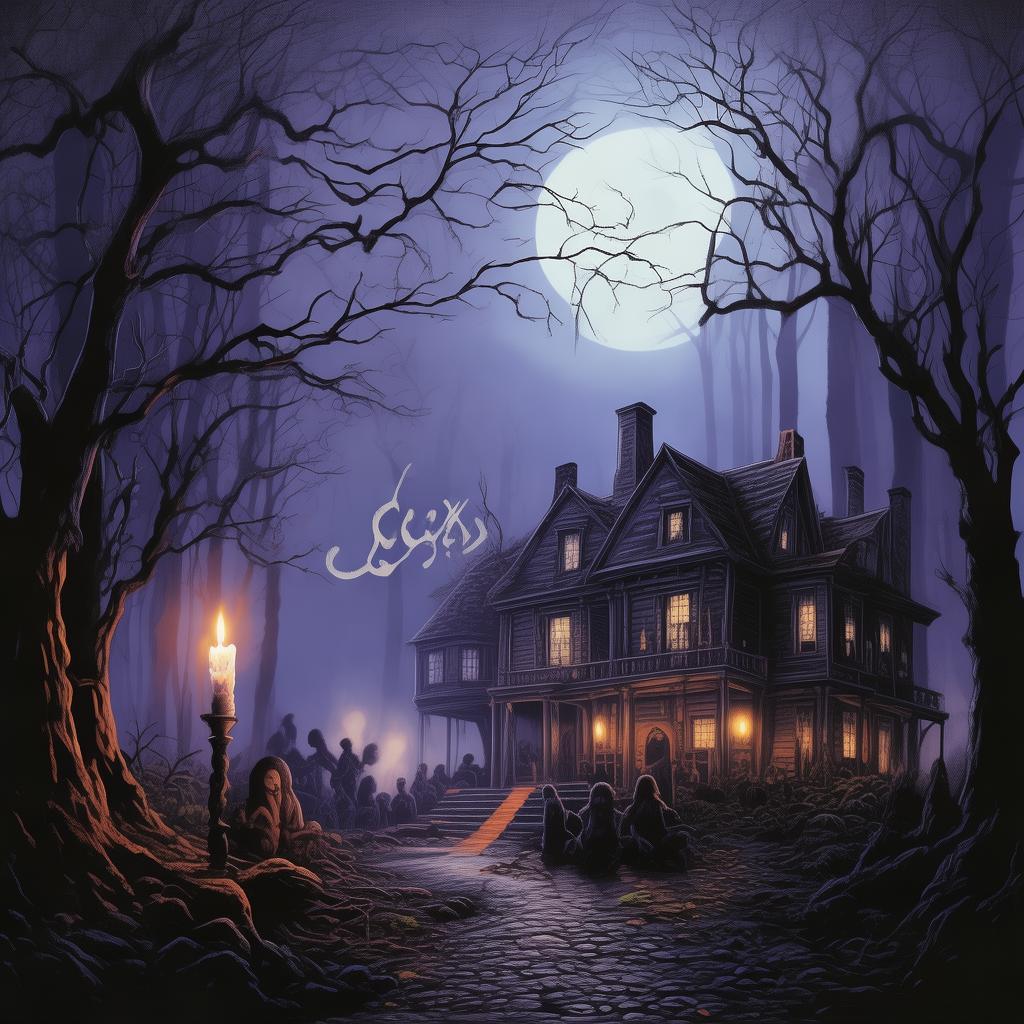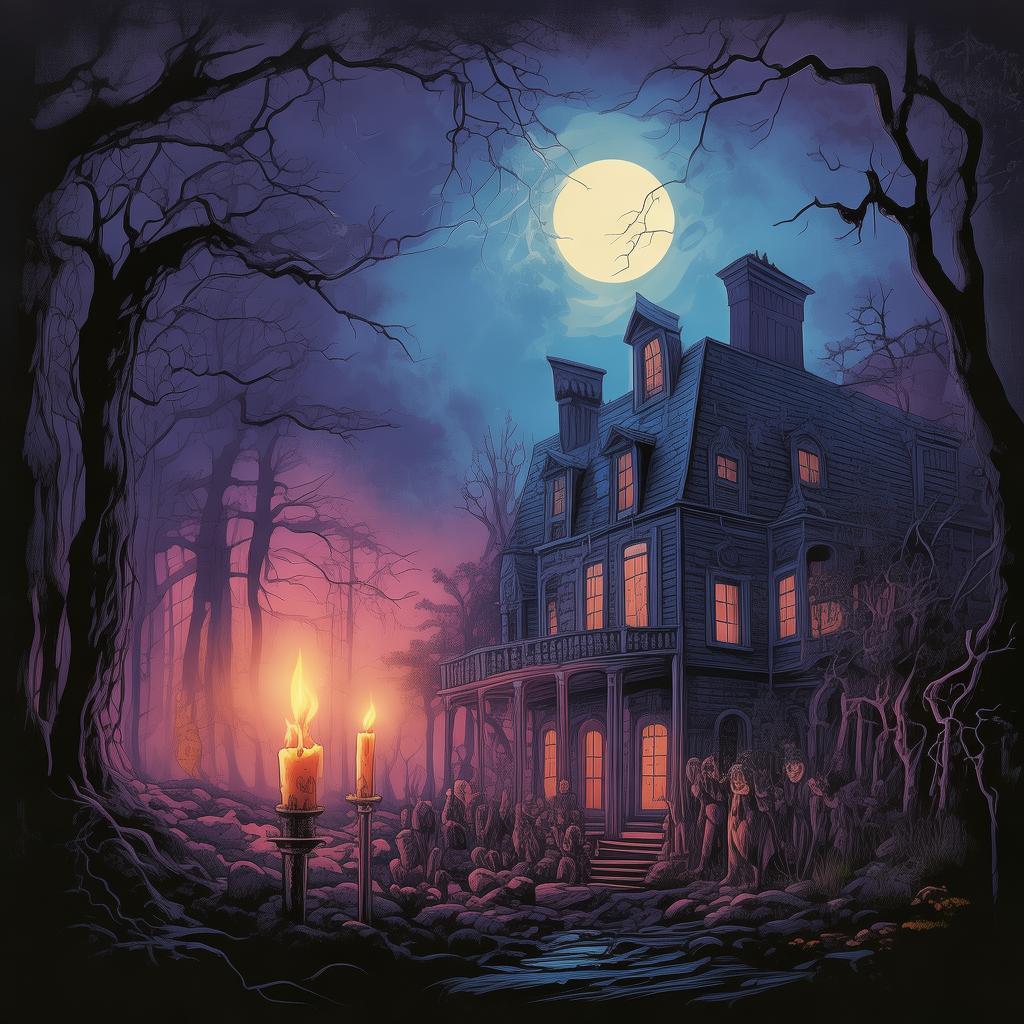The Vanishing Echoes of War: A Soldier's Lament
In the quiet of the night, the village of St. Clements lay dormant under a cloak of stars. The war had raged through the countryside, leaving behind not just scars but also spectral whispers that haunted the peaceful hamlet. Among these tales was the enigma of the vanishing soldier, a ghostly apparition that had come to define the town's folklore.
It began in the spring of 1917, during the height of World War I. The young soldier, named Thomas, had been stationed at a nearby camp. He was known for his bravery, but his heart remained heavy with the grim realities of war. One night, while the men were out on guard duty, Thomas was found missing. The next morning, they discovered his uniform lying in a field, as if he had vanished into the very mist of the war itself.
The story of Thomas's vanishing grew with each retelling. Some said he had been taken by the enemy, others that he had been struck by a bullet and his spirit wandered the battlefield. Yet, the village's elders had their own theories. They whispered that Thomas's spirit had returned, seeking answers and solace.
The ghost of Thomas was said to appear in the village's old church, a place where he had often found solace during his time in the camp. His form was a mere wisp of shadow, almost translucent, but there was no mistaking the young man's figure as he moved with an eerie grace. He would stand in the church's nave, his eyes fixed on the altar, as if seeking something hidden within the sacred space.

It was on a crisp autumn evening that the villagers began to notice something peculiar. As the church bells tolled for evening prayers, Thomas's ghost would appear, but instead of the usual somber figure, he would vanish, leaving behind a faint, echoing sound that seemed to resonate through the church's ancient walls. The villagers called it the "vanishing echo of war."
The story of the vanishing soldier became a part of the village's fabric, a legend that was both a comfort and a curse. The villagers spoke of seeing him in the fields at night, walking along the river's edge, or even in the woods that bordered their homes. Each encounter was brief, each disappearance as mysterious as the first.
It was on a particularly cold winter's night that a young girl named Eliza took it upon herself to uncover the truth. She had heard the tales, seen the ghost, and felt a deep connection to Thomas. She believed that the soldier's spirit sought not just answers but also a way to rest in peace.
Eliza spent countless nights at the church, searching for any clue that might bring Thomas's spirit some closure. It was there that she found a small, ornate locket nestled between the altar stones. Inside the locket was a photograph of a young woman, her eyes filled with love and sorrow. Eliza knew the woman, she was Thomas's mother.
With the photograph in hand, Eliza approached the village's oldest inhabitant, Mrs. Whitaker, who had known Thomas during his youth. Mrs. Whitaker confirmed that the woman in the photograph was indeed Thomas's mother, but she had been widowed long before the war. The photograph had been a treasured keepsake, lost to the chaos of war and the vanishing of her son.
Eliza took the photograph to the church one final time. She placed it on the altar where Thomas's ghost had been known to appear. The next morning, the villagers were awestruck to find that the photograph had vanished, leaving behind a faint scent of lavender, Thomas's mother's favorite scent.
That night, the church bells tolled once more, but this time, the vanishing echo was different. It was a single, long note, as if the ghost of Thomas had finally found the peace he had been seeking. The villagers whispered that the church was now haunted not by a soldier's ghost but by the spirit of a mother who had lost her son and found him again.
The story of the vanishing soldier became a testament to the enduring power of love and memory. Thomas's ghost had vanished, leaving behind a legacy that would forever be etched in the hearts of the people of St. Clements. The enigma of the vanishing soldier was not just a ghost story but a reminder of the human cost of war and the strength found in the bonds of family.
✨ Original Statement ✨
All articles published on this website (including but not limited to text, images, videos, and other content) are original or authorized for reposting and are protected by relevant laws. Without the explicit written permission of this website, no individual or organization may copy, modify, repost, or use the content for commercial purposes.
If you need to quote or cooperate, please contact this site for authorization. We reserve the right to pursue legal responsibility for any unauthorized use.
Hereby declared.









